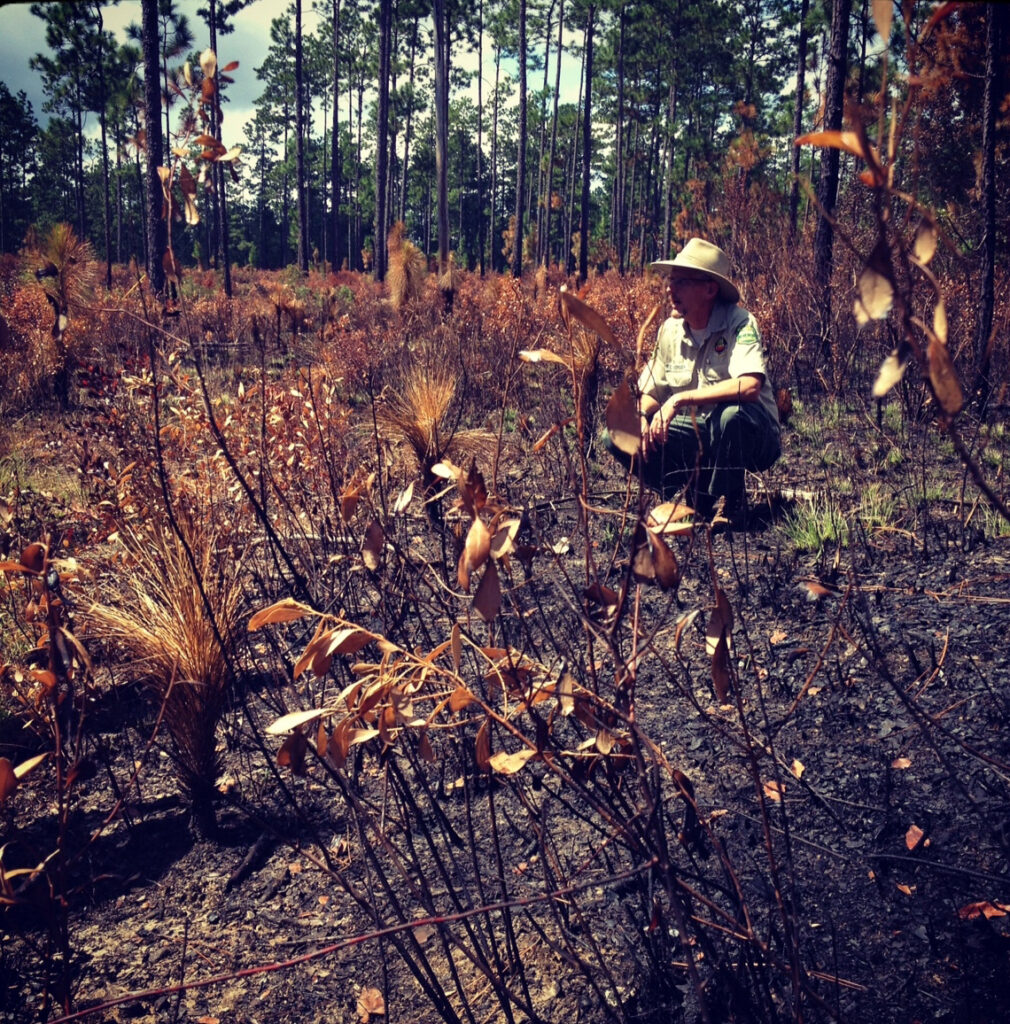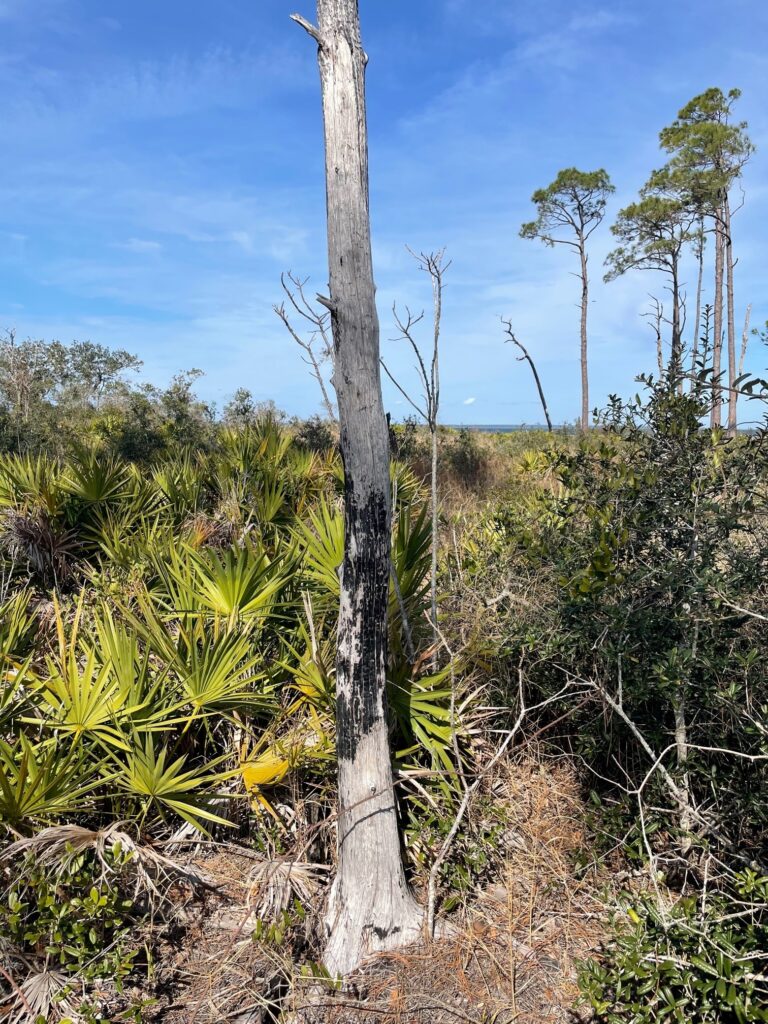By Carrie Stevenson, UF/IFAS

In northwest Florida, fire is life. Fire is the engine that turned the longleaf pine ecosystem, which once covered 90 million acres of the Deep South. But when reading news of wildfires this year in Canada, the western United States and most recently the tragedies in Hawaii, it can be difficult to look at fire as a source of renewal.
Sadly, much of the damage we read about is preventable, and significant efforts exist nationwide to protect homeowners in fire-prone areas. As human development encroaches further and further into wildlands, the natural fires begun by lightning strikes or accidental (and sometimes intentional) fires can burn through the forest and into the neighborhoods built adjacent to them.
Decades of suppressing fire leads to a buildup of dead wood on the forest floor, which becomes kindling that can fuel a wildfire for months. Extreme heat and drought associated with climate change have intensified and made formerly manageable fires unmanageable.
I never want to see a family or community devastated by fire, but as towns are built back it is imperative to look at the bigger picture. Just like low-lying communities flooded after a hurricane, one must step back and consider whether building back in the same location is safe and sensible.

Floods and fires affect the natural world too, of course. In ecology, we call these events “disturbances,” which can hit the reset button on an impacted area.
If trees and wildlife habitats are leveled, the area must start back over, regenerating life. The first species back are the “pioneer species” that can thrive in full sunlight and reproduce quickly. As an area stabilizes, has more shade and richer soil, new and more long-lasting species will settle in the area — a process known as succession.
For some species, though, fire is not a reset but a vital part of their life cycle. For the remaining longleaf forests spread across the southeastern United States, wild and prescribed fire sparks seed production and growth. Low-growing wiregrass and stately longleaf pine are particularly adapted to fire.
Our frequent summer thunderstorms and lightning strikes have started wildfires in southern forests for millennia. When allowed to burn out on their own, fires will burn until they run out of fuel or reach a water body. But in a matter of weeks — and sometimes just days — bright green signs of plant life (along with many animals) will spring up amongst the smoldering ashes.
Carrie Stevenson is the Coastal Sustainability Agent for the UF/IFAS Escambia County Extension Office, and has been with the organization since 2003. An earlier version of this piece first appeared at https://blogs.ifas.ufl.edu/escambiaco/2022/02/02/weekly-what-is-it-wildfires/
Sign up for The Invading Sea newsletter by visiting here. If you are interested in submitting an opinion piece to The Invading Sea, email Editor Nathan Crabbe at ncrabbe@fau.edu.



